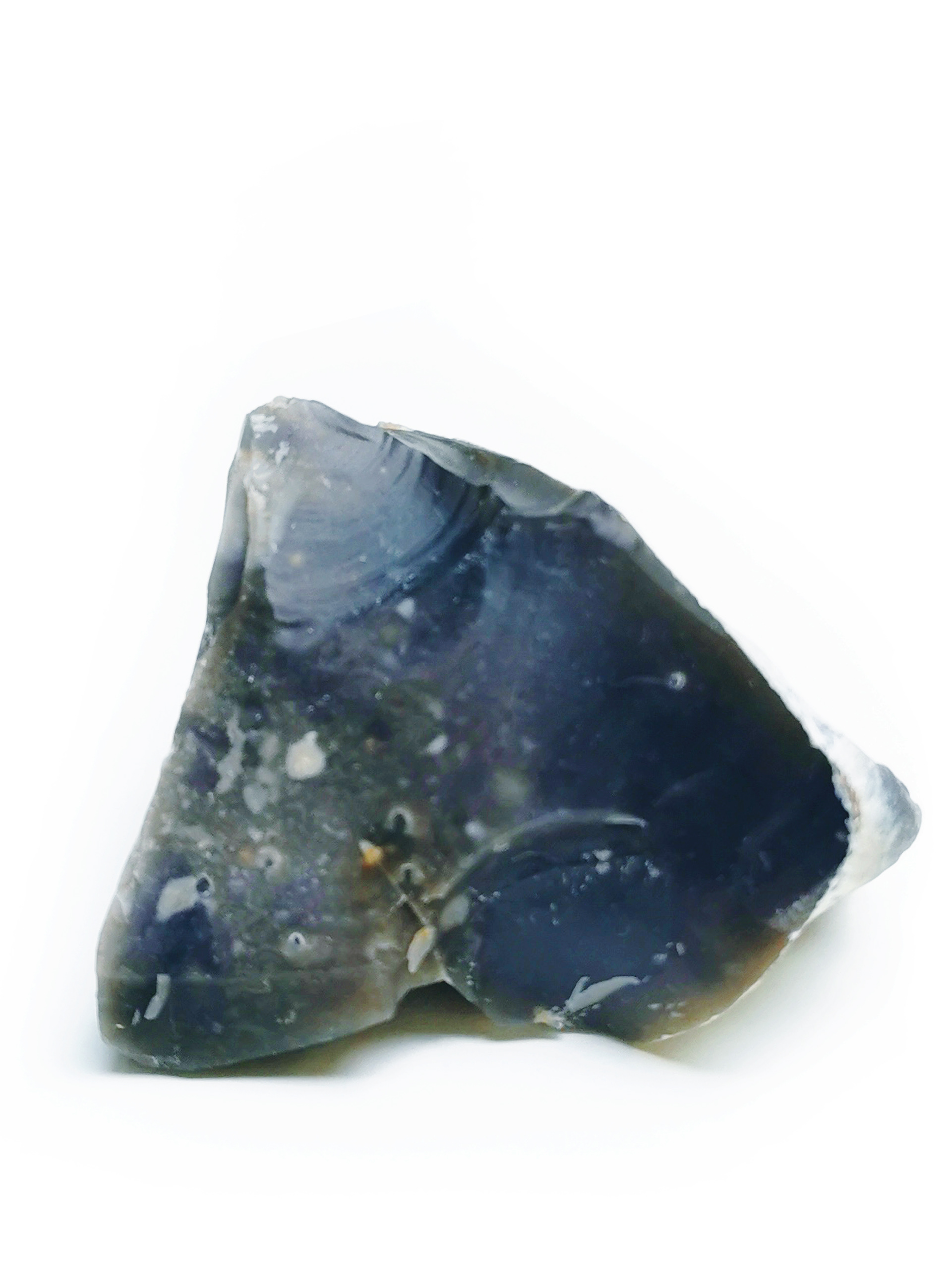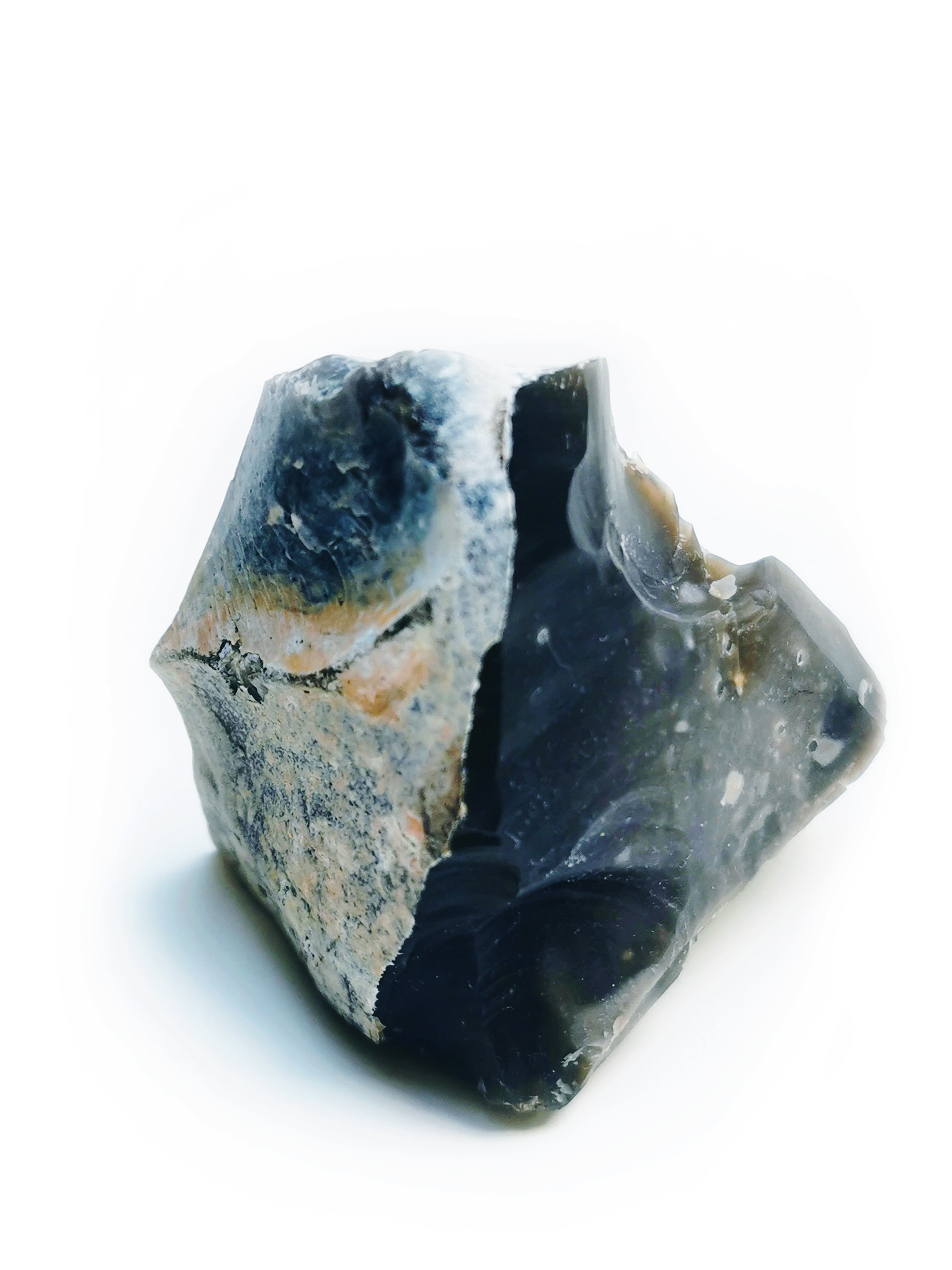"To build or to break"
"Autarky" was a project I participated in during my third year of college. The aim was to break down an object to its nth materials, source those materials, then attempt to reconstruct the object ourselves.
I decided to base my project around flintknapping and the materiality of flint and rock. In the beginning, I used rocks (mainly sedimentary) found at my local beach. Some of the results were effective, in the crudest sense, but none worked to the same standard that flint would - But experimentation and failure played a huge part of this project.
A few weeks in however, I managed to source a piece of flint from Kilmore Quay in Wexford, Ireland. The interesting story behind how the non-native flint ended up there is that a ship carrying the rock capsized in the waters off the coast of Wexford, circa ~1900, and so gradually over the years, flint has been washing up on shore.
Original Piece of Flint




Flintknapping was quite a difficult skill to learn, as simple as it sounds on paper (hit one rock with another). I still wouldn’t describe myself as knowing what I’m doing.
To get a perfect shard, it’s all about finding the perfect point between plains of the rock. Many skilled flintknappers are able to tell what a shard would look like before hitting it. I stuck to using another rock to break the shards like proper flintknappers do, resulting in a number of injuries.
Then comes sharpening the shard of flint that’s been hacked off. To do this you use a small poking tool to hack flakes off of the edge to make them sharp.
The aim was to create a few microliths that could be used as cutting utensils. Unfortunately, given the difficulty, things didn’t quite turn out as I’d hoped. The flints were far too small to be feasibly used as tools, but did still fulfill their need to cut basic materials such as paper, albeit roughly.
Hacked Off Shards
Along the way I discovered some properties of the flint that I was surprised to find, mostly from when the flint is struck. These include:
- “Phosphorous” smell
- Sparks/flares/smoke tendrils
- Grimy residue
- Different layers of texture
- Sparks/flares/smoke tendrils
- Grimy residue
- Different layers of texture
It was in response to these elements that I created an animation to go with my microlith tools. I was interested in the choice that flint allows; to create tools to either build or break. One can fabricate a tool or light a fire that can either sustain a life, or take one - which is admirable for such an unassuming material like flint.
Combining this concept with the surprisingly sensory atmosphere that flintknapping provided, I created a rather dramatic animation, that utilised the sounds and textures taken from my time working with flint. The result was presented to be primitive, yet reverent and ritualistic in nature.
Style frame
